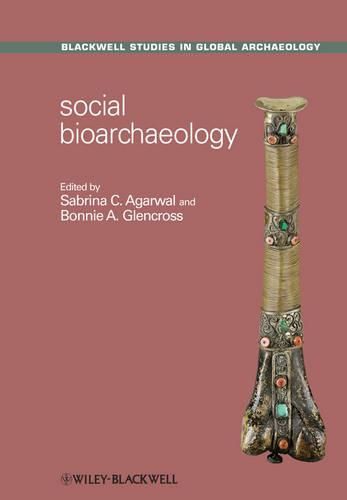Readings Newsletter
Become a Readings Member to make your shopping experience even easier.
Sign in or sign up for free!
You’re not far away from qualifying for FREE standard shipping within Australia
You’ve qualified for FREE standard shipping within Australia
The cart is loading…






Bioarchaeology is a field in which the traditional means of analyzing and interpreting human skeletal remains from an archaeological context are currently being challenged. This new volume surveys approaches in this field via a biosocial perspective. While skeletal biologists have recognized the interplay of biology and culture in their analysis of variation in the morphology of mineralized tissues, social bioarchaeology places an emphasis on the dynamics of this relationship. The field has expanded into new research directions, integrating biological, behavioral, ecological and social research. Agarwal and Glencross offer the first comprehensive collection on bioarchaeology organized by topical themes. They expand their focus from the narrower critiques of methods, and studies of individual geographical regions or human subpopulations for a more comprehensive look at the field. The authors emphasize the need for the behavioral analysis of archaeological skeletal remains, and the reconstruction of prehistoric and historic activity patterns. Each aim to provide a significant contribution to our knowledge of adaptive morphology, variation, and behavior within a socio-ecological context. The initial chapters introduce the nature of skeletal samples in Part I, and tackle problems of analysis and interpretation of skeletal remains. In Part II, the contributors investigate the social approach to identity in bioarchaeology, exploring the distinction of sex, gender, class and ethnicity in mortuary remains, political and social issues, as well as the use of molecular methods to construct identities. In Part III they address bioarchaeological issues concerning of the human life cycle, looking at sequential developmental stages and life history events in understanding and interpreting skeletal morphology. Finally Part IV is a fresh look at the topics of health and disease, i.e., the role of paleopathology in epidemiological, biocultural and evolutionary approaches. This volume will be an invaluable addition to instruction and research for students and teachers in biological and/or medical anthropology, and archaeology.
$9.00 standard shipping within Australia
FREE standard shipping within Australia for orders over $100.00
Express & International shipping calculated at checkout
Bioarchaeology is a field in which the traditional means of analyzing and interpreting human skeletal remains from an archaeological context are currently being challenged. This new volume surveys approaches in this field via a biosocial perspective. While skeletal biologists have recognized the interplay of biology and culture in their analysis of variation in the morphology of mineralized tissues, social bioarchaeology places an emphasis on the dynamics of this relationship. The field has expanded into new research directions, integrating biological, behavioral, ecological and social research. Agarwal and Glencross offer the first comprehensive collection on bioarchaeology organized by topical themes. They expand their focus from the narrower critiques of methods, and studies of individual geographical regions or human subpopulations for a more comprehensive look at the field. The authors emphasize the need for the behavioral analysis of archaeological skeletal remains, and the reconstruction of prehistoric and historic activity patterns. Each aim to provide a significant contribution to our knowledge of adaptive morphology, variation, and behavior within a socio-ecological context. The initial chapters introduce the nature of skeletal samples in Part I, and tackle problems of analysis and interpretation of skeletal remains. In Part II, the contributors investigate the social approach to identity in bioarchaeology, exploring the distinction of sex, gender, class and ethnicity in mortuary remains, political and social issues, as well as the use of molecular methods to construct identities. In Part III they address bioarchaeological issues concerning of the human life cycle, looking at sequential developmental stages and life history events in understanding and interpreting skeletal morphology. Finally Part IV is a fresh look at the topics of health and disease, i.e., the role of paleopathology in epidemiological, biocultural and evolutionary approaches. This volume will be an invaluable addition to instruction and research for students and teachers in biological and/or medical anthropology, and archaeology.